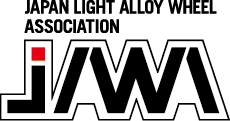Light Alloy Wheels Tips
| Word | Explanation |
| Wheel | Equipment on which a tire is attached and held – they generally consist of a rim and disc part and are attached on to the axel hub to support the load. |
| Rim | Part on which a tire is attached and held |
| Disc | Part to be attached on to the axel hub to hold the rim |
| Flange | Outer rim part to hold the tire in the horizontal direction when seen from the front – its various shapes are represented by symbols, B, J, JJ, K, L, etc. (refer to JIS 4218, Outline of Rims for Passenger Vehicles) |
| Bead seat | Part of the rim to contact the tire’s bead part to hold the load in the direction of its radius |
| Well | A trough with a certain width and depth provided on the bottom part of the rim to make it easier to put on or remove a tire from the rim |
| Inset | The distance (mm) from the wheel’s center line to the disc attachment surface |
| P.C.D. | Stands for Pitch Circle Diameter |
| Rim type | Normal Rim and Reverse Rim (1) Normal Rim: Standard shape – tires are put on or removed from the outer rim side (2) Reverse Rim: Reversed version of the normal rim - tires are put on or removed from the inner rim side |
| Bolt hole | Holes for the thru bolts to fix the wheel to the hub |
| Bolt & Nut | Bolts (Hub bolts) to fix the wheel to the hub specified by their respective corresponding vehicle models – nuts are available in different sizes and pitches in 3 categories as per shape of their bottom surface, i.e., tapered bottom, spherical bottom, and flat bottom. Note that nuts with different bottom shapes are needed per different vehicle models. |
| Hub Diameter | Diameter of the hole in the center of the wheel |


